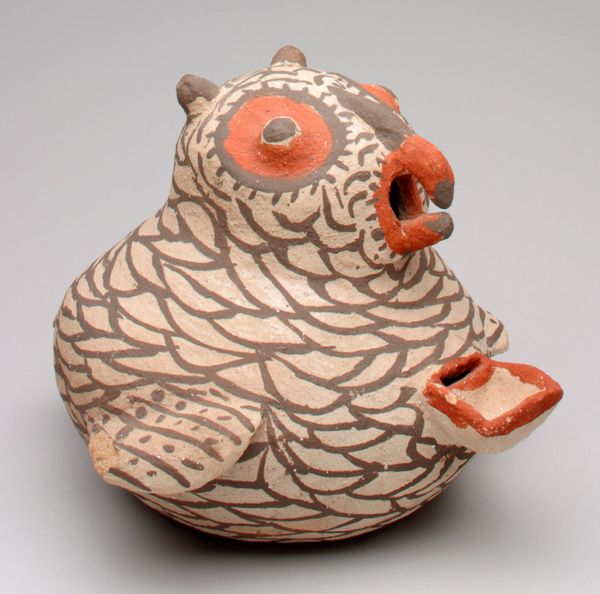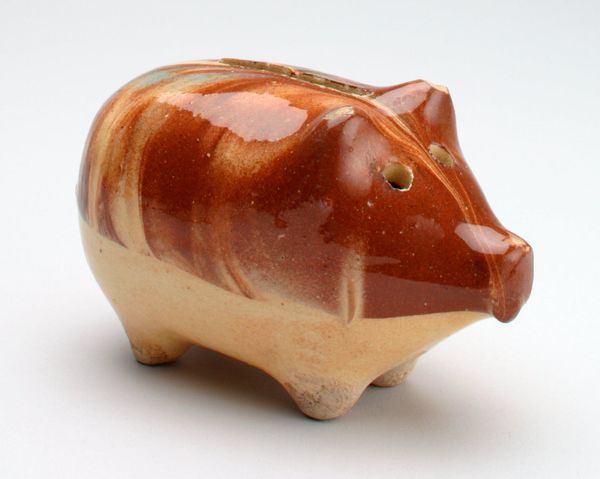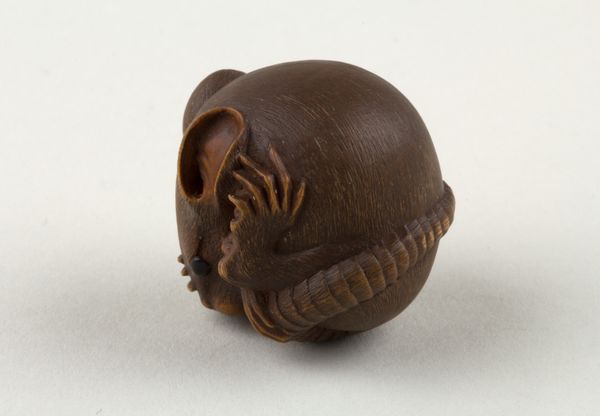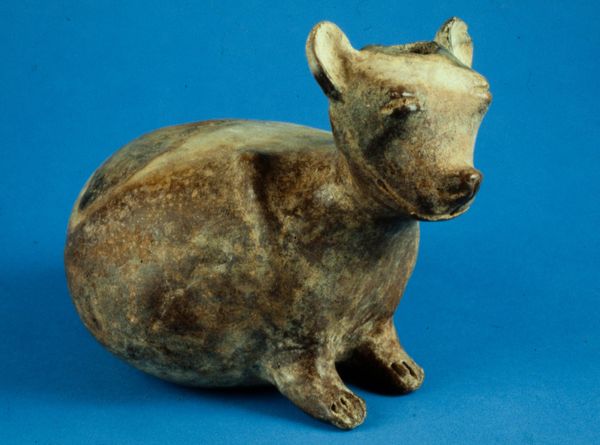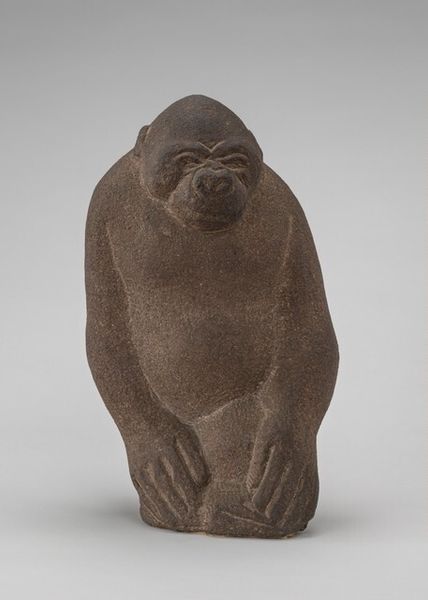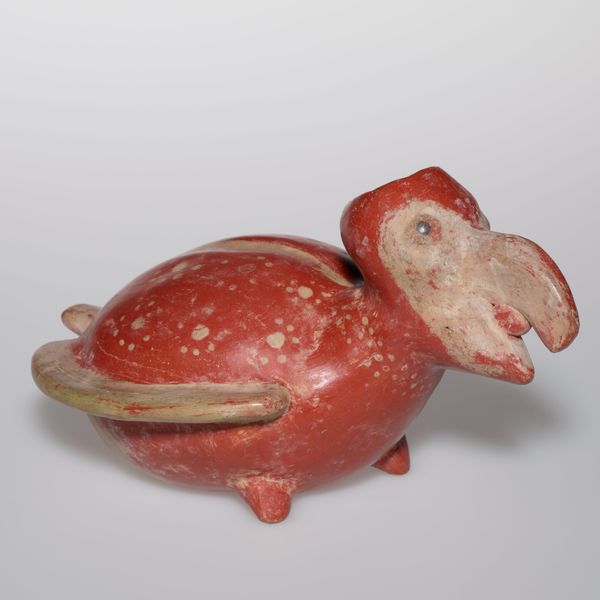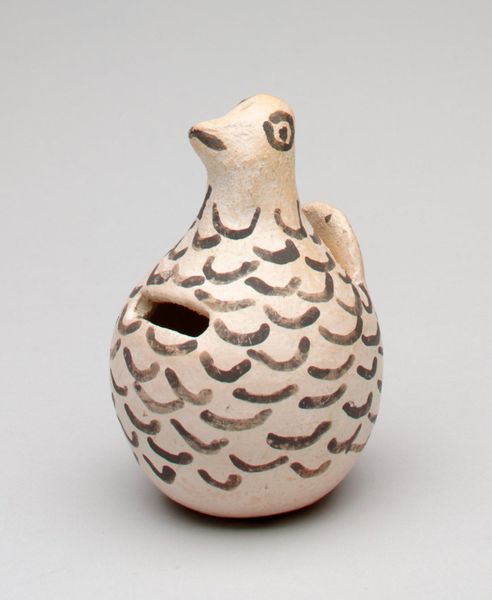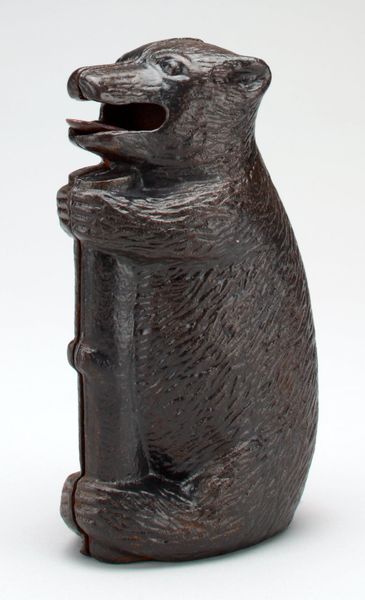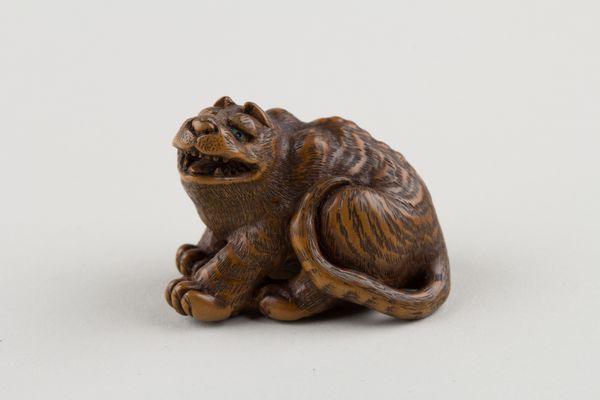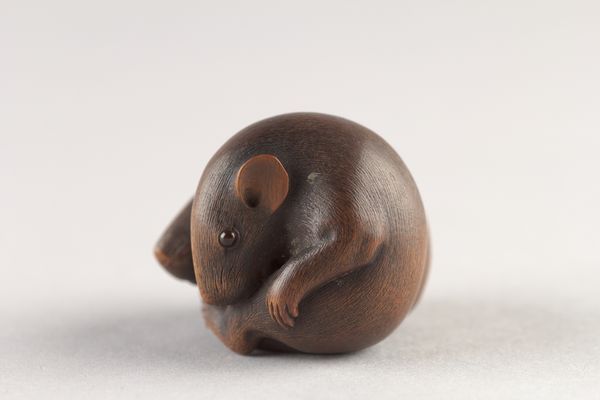
ceramic, sculpture
#
ceramic
#
figuration
#
folk-art
#
sculpture
Dimensions: 2 x 2 3/8 x 2 7/8 in. (5.08 x 6.03 x 7.3 cm)
Copyright: No Known Copyright
Curator: Here we have a delightful example of folk art, the Mojave Frog still bank, dating back to around the 1920s. It’s a ceramic sculpture. Editor: It’s undeniably charming! The mottled texture and simple design give it such a grounded, almost primal feel. Curator: Absolutely. These "still banks", or coin banks that couldn't move, often took the shape of animals and were popular during that time. This particular piece offers a glimpse into the vernacular creativity and commercial life of early 20th-century America. The Mojave frog form is interesting in and of itself too, a representation perhaps of desert life rendered as kitsch object. Editor: I'm struck by how much its form feels subversive for its time. On one level, this frog can represent the impact and visibility of folk-art objects. More broadly, however, in this period we see an increase in representation, perhaps indicative of economic change allowing more consumer purchases and less labor focus. In this light, what are your thoughts about class and access reflected in its style and function? Curator: That’s an insightful reading. Its slightly rough, hand-made aesthetic positions it outside the high art tradition. The simplicity is also worth noting; this was not an overtly complicated or challenging object. Perhaps the frog motif allowed for social commentaries on status and the changing socio-economic structures, accessible enough to appeal to broader populations. Editor: I agree; it certainly invites you to think about who was saving, spending, and making money during this period, particularly considering the uneven distribution of wealth in the 1920s. Curator: Examining the object as it relates to this framework, one considers the economic stratification of its potential customers as it reflected and engaged with themes like access, power, and identity. Editor: For me, I appreciate the understated radicalism. It seems this little frog whispers rather loudly about consumer culture. It encapsulates so many stories about America’s history and its present-day consumer culture. Curator: Indeed, an unassuming artifact of a period brimming with sociopolitical undertones.
Comments
No comments
Be the first to comment and join the conversation on the ultimate creative platform.
